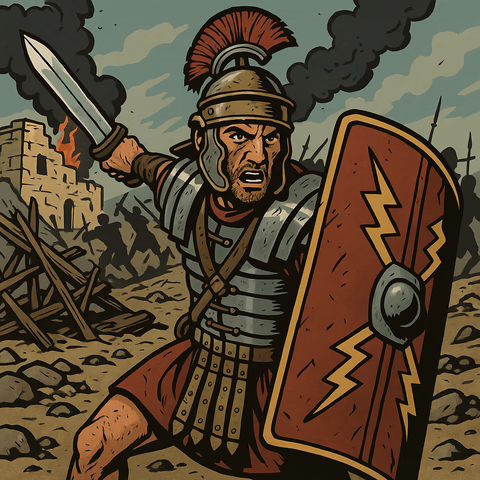
Timeline of the Jewish-Roman Wars
The Jewish-Roman Wars represent a devastating period in Jewish history that fundamentally transformed Judaism.
It started as tensions under Roman rule, but then erupted into a series of catastrophic revolts, leading to the destruction of the Second Temple and the end of Temple-based worship.
These events marked the transition from Temple Judaism to Rabbinic Judaism and scattered the Jewish people across the Roman Empire.
The primary historical source for these conflicts comes from Josephus, a Jewish historian who witnessed the Great Revolt firsthand, initially as a rebel commander and later from the Roman side.
Fulfilling Jesus’ Prophecy
Jesus himself prophesied these events with remarkable accuracy, warning of Jerusalem’s destruction and the Temple’s demolition, which all happened in AD 70. These conflicts reshaped not just Judaism but early Christianity as well. The destruction of Jerusalem accelerated the separation between Judaism and the emerging Christian congregation.
Timeline
AD 66
The Great Revolt Begins
Tensions explode in Caesarea and Jerusalem over Greek citizens sacrificing birds in front of a synagogue and the Roman governor Florus stealing from the Temple treasury. Jewish rebels capture the Antonia Fortress and massacre the Roman garrison.
The Roman legate of Syria, Cestius Gallus, attempts to restore order but is defeated by Jewish forces at Beth Horon, losing nearly 6,000 troops.
Josephus, War 2.14.4-2.19.9
AD 66-67
Christians Flee Jerusalem
Following Jesus’s warning to ‘flee to the mountains’ when seeing Jerusalem surrounded (Luke 21:20-21), the Christian community flees Jerusalem. Eusebius records that they escaped to Pella in the Decapolis region, having received a ‘divine oracle.’
This event fulfills Jesus’s specific instructions:
‘Now, when you see armies camped around JeruSalem, know that her destruction is near. Then those in Judea should run to the mountains… Yes, everyone in her midst should flee, and those who are in [fields] must not come back into her!’ —Luke 21:20-21
The Christians’ escape before Jerusalem’s destruction becomes a powerful testimony to early believers of Jesus’s prophetic accuracy.
AD 67, Summer
Coastal Cities Fall
Vespasian captures Japha, Tarichaea, and Gamala. The mountain fortress of Mount Tabor is taken, and Gischala falls last, with rebel leader John of Gischala escaping to Jerusalem.
Josephus, War 3.9.1-4.2.5
AD 70, March
Siege Begins
Titus arrives with four legions and begins the siege during Passover, trapping hundreds of thousands of pilgrims inside Jerusalem. The city is divided between three rival factions: John of Gischala, Simon bar Giora, and Eleazar ben Simon.
Josephus, War 5.1.1-5.2.5
AD 70, April-May
Famine and Internal Strife
Severe famine grips Jerusalem. The rival factions burn the city’s food supplies in their fighting. Josephus reports people eating belts, shoes, and even their own children.
Josephus, War 5.10.2-5.10.4
AD 70, July
Antonia Falls
Romans capture the Antonia Fortress after a secret night attack. Titus orders it demolished to create a ramp for attacking the Temple. Daily sacrifices in the Temple cease for the first time since the Maccabean revolt.
Josephus, War 6.1.3-6.2.1
AD 70, August 9-10
Temple Destroyed
Despite Titus’s reported desire to preserve it, the Temple is set ablaze. The fire spreads rapidly, and the Temple is completely destroyed on the 9th of Av - the anniversary of the First Temple’s destruction by Babylonians.
After the fire, Roman soldiers, believing that Jews had hidden gold between the Temple stones, tear apart the entire structure stone by stone. This fulfills Jesus’s prophecy with chilling accuracy:
‘There won’t be a stone left on top of a stone here that won’t be thrown down!’ —Mark 13:2
Josephus reports that the gold had actually melted in the intense heat and seeped between the stones, making the soldiers’ destruction even more thorough as they searched for it.
Josephus, War 6.4.5-6.4.7
AD 70, September
Aftermath and Captivity
The Romans kill an estimated 1.1 million Jews during the siege (according to Josephus), and take 97,000 as slaves. Many captives are sent to Rome to build the Colosseum.
The Arch of Titus, still standing in Rome today, commemorates the victory and depicts Roman soldiers carrying away the Temple’s sacred items, including the golden menorah.
Josephus, War 6.9.3
AD 71-73
Masada Siege
The Romans systematically eliminate remaining resistance. The final holdout is the fortress of Masada, where 960 Jewish zealots choose mass suicide rather than surrender to the Roman legion.
Josephus, War 7.8.1-7.9.2
42 years pass
15 years pass
AD 132
Bar Kokhba Revolt Begins
Simon bar Kokhba leads a new revolt against Rome during Hadrian’s reign. Initially successful, the rebels establish an independent state and begin minting coins.
Rabbi Akiva, one of Judaism’s greatest sages, declares Bar Kokhba the Messiah, even interpreting Numbers 24:17 (‘a star shall come out of Jacob’) as referring to him. This messianic endorsement from such a respected figure greatly amplifies support for the rebellion.
Some scholars suspect that during this period, Rabbi Akiva and his colleagues may have ‘standardized’ the Hebrew text, adjusting and replacing certain passages to counter Christian interpretations. This theory is supported by variations found in the older Greek Septuagint and the Dead Sea Scrolls.
AD 134-135
Roman Response
Emperor Hadrian sends his best general Julius Severus from Britain with massive reinforcements. The Romans methodically isolate and destroy rebel strongholds.
AD 135
Final Defeat
The Romans capture Bar Kokhba’s last fortress at Betar, killing the rebel leader and massacring the population. Hadrian renames Jerusalem to Aelia Capitolina and Judea to Syria Palaestina, banning Jews from entering Jerusalem.
This defeat marked the end of Jewish military resistance to Roman rule. It led to the dispersion of most of the Jewish population across the Roman Empire and beyond, though some Jewish communities remained in the region.
Timelines: Bible History
 Timeline of the Kings of Israel and Judah
Timeline of the Kings of Israel and Judah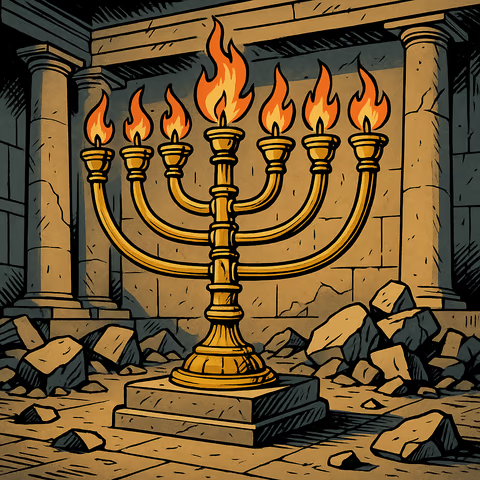 Timeline of the Maccabeean Period
Timeline of the Maccabeean Period Timeline of the Jewish-Roman Wars
Timeline of the Jewish-Roman Wars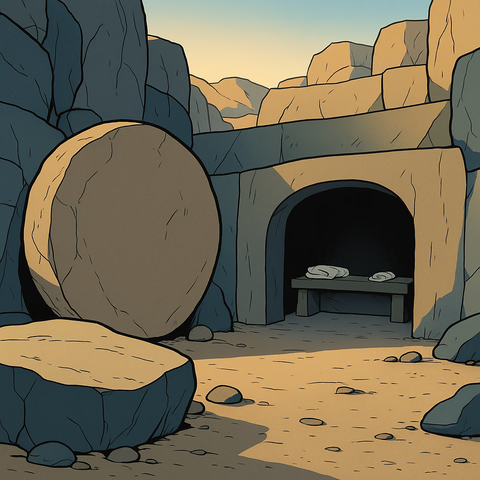 Timeline of Jesus' Death and Resurrection
Timeline of Jesus' Death and Resurrection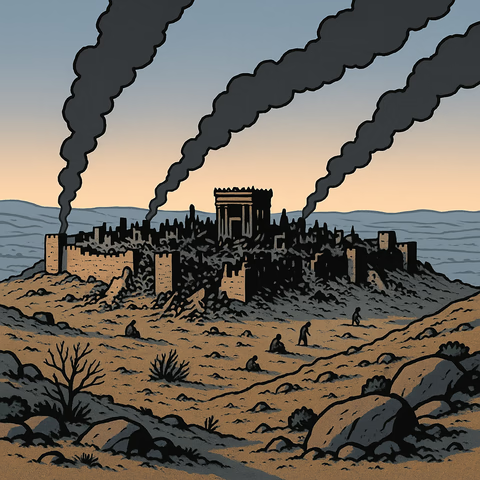 Timeline of the Babylonian Exile and Restoration
Timeline of the Babylonian Exile and Restoration
Timelines: Doctrines
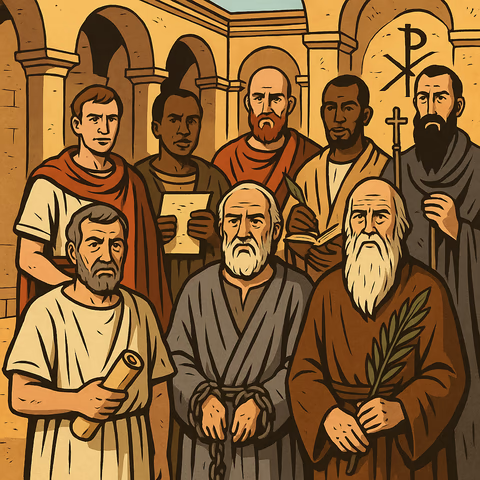 Timeline of Church Fathers and their Doctrines
Timeline of Church Fathers and their Doctrines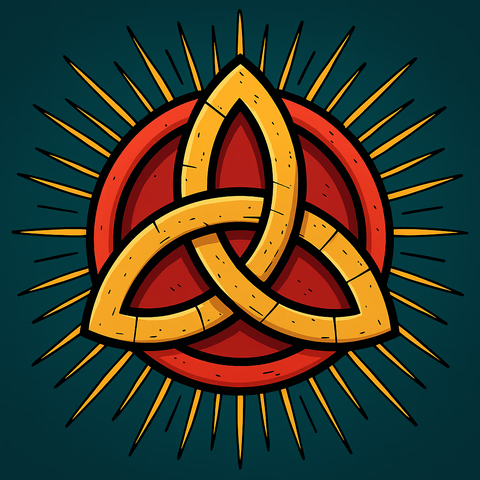 Timeline of the Trinity Doctrine
Timeline of the Trinity Doctrine Timeline of Afterlife Doctrines
Timeline of Afterlife Doctrines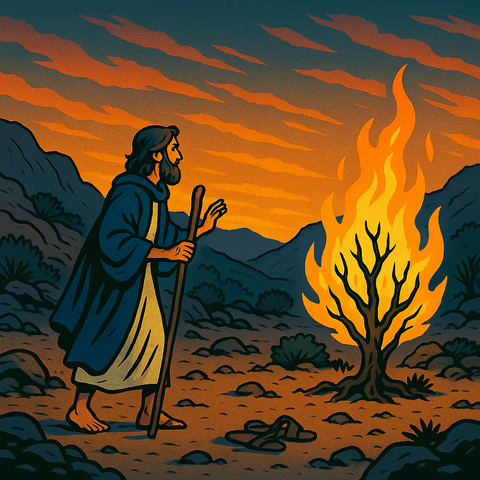 Timeline of God's Name
Timeline of God's Name
Timelines: Miscellaneous
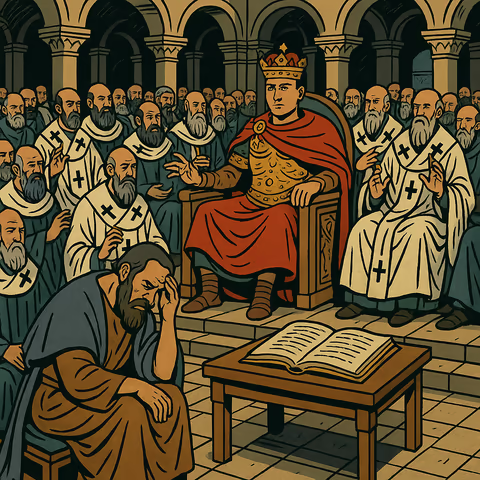 Timeline of Bible Canon Formation
Timeline of Bible Canon Formation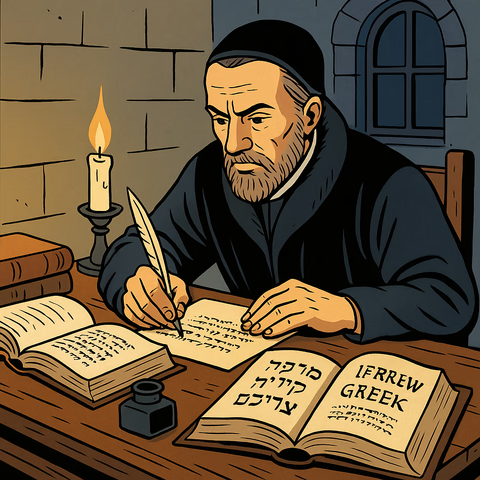 Timeline of Bible Translation
Timeline of Bible Translation Timeline of Church Schisms, Gnostics, and Sects
Timeline of Church Schisms, Gnostics, and Sects Timeline of Failed Apocalyptic Predictions
Timeline of Failed Apocalyptic Predictions
Also see our Articles index and our About section.